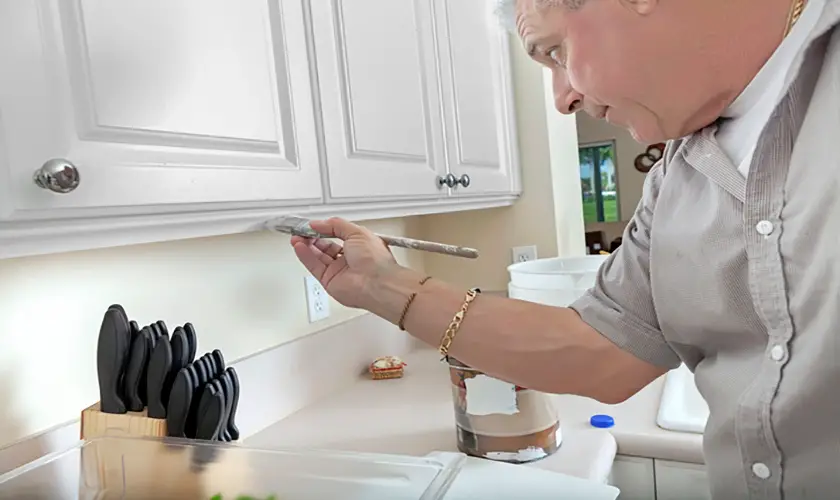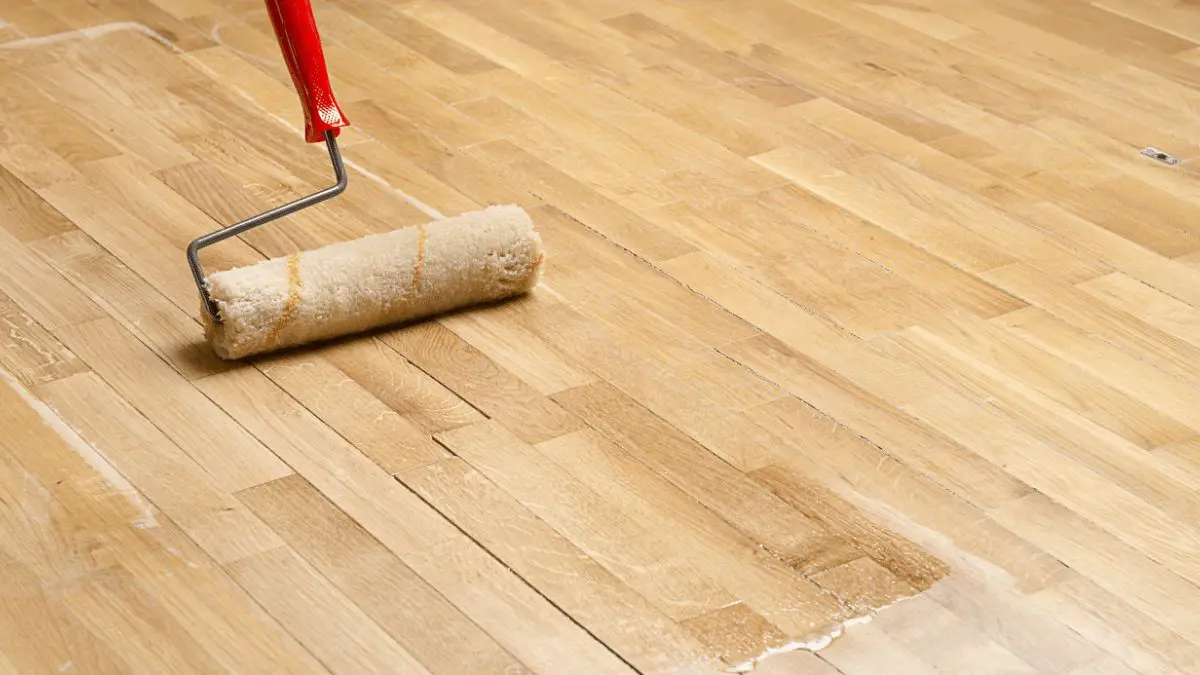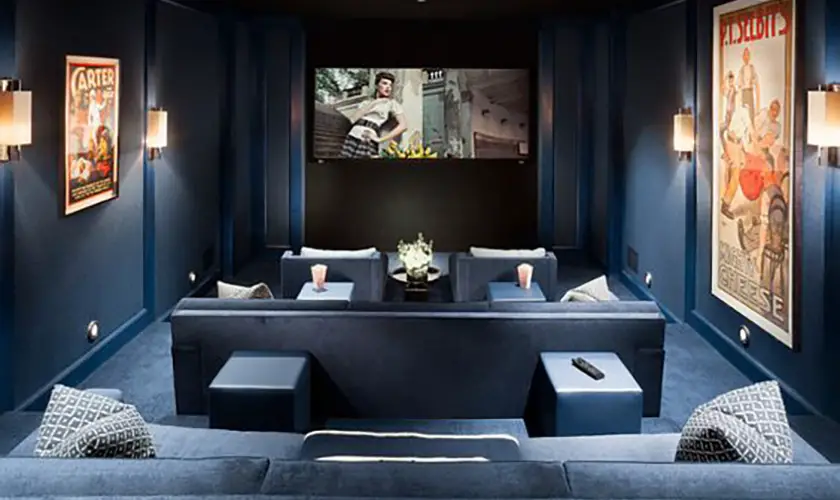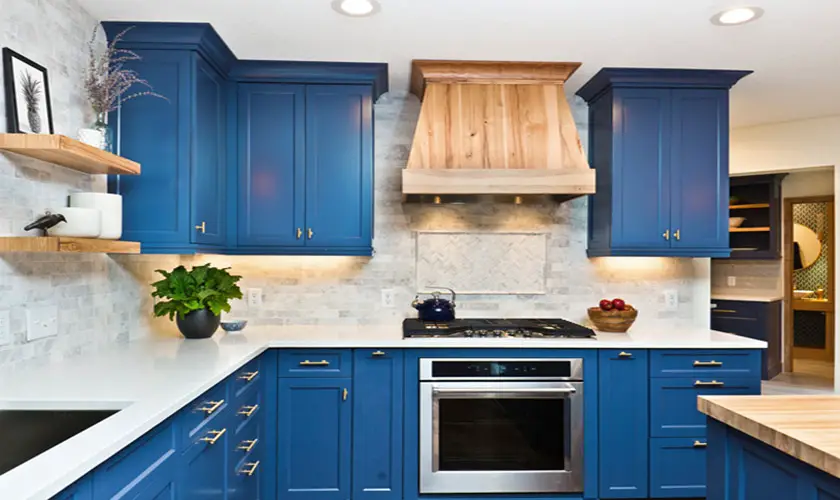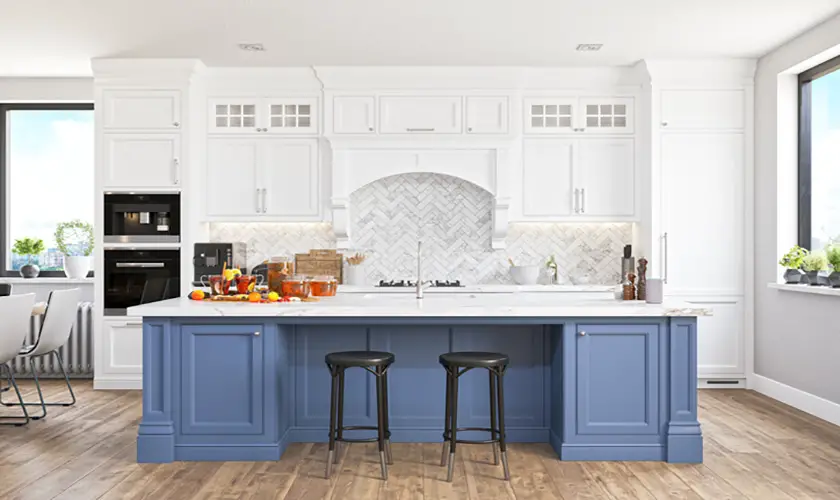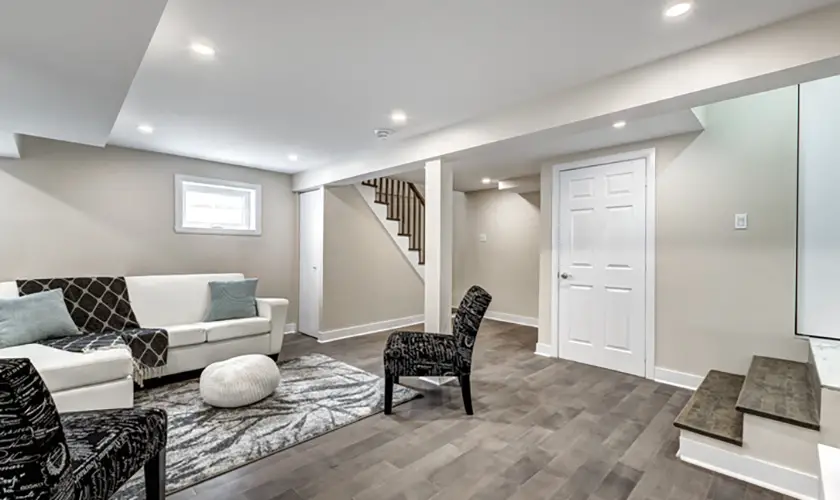
Preparation is half the battle when planning a big home improvement project. This is especially true for significant painting projects where you’re repainting a living room, kitchen, or bedroom. It’s important to know exactly how much paint you’ll need to do the job. While you don’t want to go overboard and purchase too many gallons of paint, you also want to have enough.
To know how many gallons of paint you’ll need for your bedroom, you need to understand how to calculate your bedroom’s square footage. You must also know how many square feet a single gallon of paint will cover. Aside from these factors, there are several others to consider to accurately calculate how many gallons of paint your bedroom will require.
Because of how expensive paint is, making an accurate calculation is very important. You could go broke quickly by overspending and getting too many gallons. On the other hand, not getting enough paint will slow down your painting project and hurt your chances of finishing promptly.
How Many Square Feet Does a Gallon of Paint Cover?
The first step in calculating the amount of paint you’ll need for your bedroom is understanding how many square feet a gallon of paint covers. While it varies according to the quality of paint you use and how thick you spread it, the average gallon of paint will cover around 400 sq. ft. This is a rule of thumb that professional painters use, so it’s trustworthy and sound in most cases.
It’s essential, however, to check the label and instructions on your can of paint because it could specify something different. Unless it says otherwise, the thumb rule of 400 square feet per gallon of paint is a good one to go by. If you have a very small room and don’t need a whole gallon, one quart of paint will cover 100 square feet.
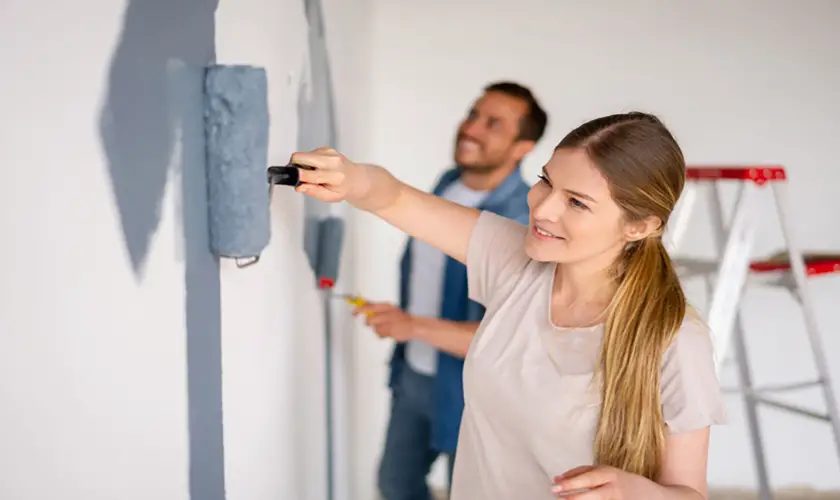
How to Calculate Square Footage of a Bedroom
Knowing how many square feet a gallon of paint covers is only half of the equation. The other half is calculating the square footage of your bedroom. Calculating square footage isn’t overly complicated but requires some math and a calculator. Here’s the equation that you’ll use.
- Height of the Room x Height of the Walls = Wall Surface Area
- Total Length of the Room x Width of the Room = Ceiling Surface Area
- Each of the four wall surface areas + ceiling surface Area = Total Area of the Room
Remember that you typically won’t want to paint the ceiling and the walls different colors, so you may need to run these calculations separately. However, using these simple mathematical formulas, you can calculate the expected paint coverage for a living room or bedroom.
Painting a basement bedroom? Check out our top picks for basement paint colors.
How Much Paint You’ll Need for Walls
While the formula for calculating the surface area of your walls is relatively simple, it isn’t always a straightforward project. Depending on the layout of your bedroom, you’ll have to navigate around closets, windows, doors, and various nooks and crannies.
Therefore, you’ll need to calculate your wall surface area one piece at a time. If you don’t want to do that, you can calculate the size of the walls, including the windows and doors. When you have that calculation, you can measure the surface area of each window and door and subtract it from your total. The end goal is to get the total surface area of your walls, not including the areas you don’t want to paint.
How Much Paint You’ll Need for Ceilings
Calculating the surface area of your ceiling is much easier than the surface area of your walls. There typically aren’t as many twists, bends, and turns as with walls, and all you need to do is multiply the width by the length. Make sure you have a tape measurer handy to take accurate measurements. If you don’t have a tape measure, you can purchase one at your local hardware or paint store while shopping for the best prices.
Factors That Affect How Much Paint You’ll Need
These are seven key factors in determining how much paint you will need. Getting these things right can save you multiple trips to the paint store.
Total Square Footage of the Walls and Ceilings
Determining how much paint you need is the square footage of the total surface area you’re painting. Calculating your surface area before proceeding to the other considerations is a good idea. No matter what the additional factors say, you’ll need at least enough for the square footage.
Number of Coats of Paint
It goes without saying, but the more coats of paint you decide to add, the more paint you’re going to need. Most painting jobs require a minimum of two coats, while some require up to three. However, if you’re doing more of a resurfacing where you’re painting your walls the same color as before, you might not need more than one coat of paint.
It’s also worth noting that each additional coat will take less paint than the coat before it. Progressively less paint is required because your walls will soak up more paint on the first coat than on the second one. Adding a third coat will soak up less paint than the first two.
Paint Color Choice
You might not have known that your color choice will play a significant role in whether you need a lot of paint or just a little. As a general rule, light paint colors will require more paint than darker colors. This is because light paint is usually thinner than dark colors, which means that defects will be much more evident. As such, painting your master bedroom or any other bedroom with light paint will require more coats than with a dark color.
However, light and neutral paint colors are the preferred styles. Therefore, if you want to be trendy and paint your bedroom a color that will boost resale value, you might have to splurge for some extra paint. You should plan on using an extra gallon if you paint your bedroom a light color.
Underlying Paint Color
Just as the color you’re planning to paint your bedroom plays a role, so does the existing color of your bedroom. For example, if you’re going from a dark to a light color, you’ll need a few extra coats of paint. White or beige paint shows more defects than darker colors, and it’s also harder to cover up dark colors with light ones. The dark undertones often shine through if you don’t add enough coats.
However, you won’t need as much paint when you’re going from dark to dark or light to dark. Dark paint does better than overwhelming the white paint underneath and covering it up. You should figure for an extra gallon or two if you’re going from dark to light.
Condition of Your Bedroom Walls and Ceiling
Your bedroom walls and ceiling will always stay flawless, smooth, and undamaged in a perfect world. However, we don’t live in an ideal world, so there’s a good chance that your walls aren’t perfect either. Applying paint to a smooth surface with minimal defects is easier, faster, and requires less paint than applying paint to damaged or unpainted surfaces.
Additionally, if you’re painting a textured ceiling, you should plan on using some extra paint because of how it absorbs into the surface.
Thickness or Spread
The thicker you apply paint to your walls and ceiling, you will go through more paint. While it’s necessary in some cases to put it on thick and heavy, this isn’t always the case. Rather than splashing paint on your walls in a dense, goopy fashion, you should stir your gallon can of paint thoroughly until it’s the proper thickness.
Next, rather than applying paint in thick swaths, you should take your time and add a second coat. Applying paint thick in certain places but not everywhere will result in an uneven application.
The Tools You Use
Your painting technique and tools will determine how thick paint gets applied. Using a roller is the best idea for minimal thickness and an even coat. You can also opt for a paint sprayer, usually reserved for exterior painting projects. There’s also a learning curve to using a paint sprayer, which means you might end up wasting paint as you learn the tricks to spraying.
Your best option is to use a paint roller for large areas and switch to a small brush when you get close to trim and crown molding. You should also use a brush for the trim to get into every crack and crevasse. Not only will this result in a better finish, but it will also help you use less paint.
Room Size Chart According to Square Footage
For a simple calculation, here is a table with a list of measurements, square footage, and how many gallons of paint you’ll need.
| Size of the Room in Feet | Ceiling Height in Feet | Gallons of Paint |
|---|---|---|
| 10 x 10 | 8 | 1 |
| 10 x 10 | 9 | 1 |
| 12 x 12 | 8 | 1.25 |
| 12 x 12 | 9 | 1.5 |
| 14 x14 | 8 | 1.5 |
| 14 x 14 | 9 | 1.5 |
| 15 x 15 | 10 | 2 |
| 20 x 20 | 9 | 3 |
| 25 x 25 | 10 | 4-5 |
While this table provides a rough estimate and starting point to make your calculations, keep in mind that that’s all it is. To make accurate calculations, you’ll have to take measurements, subtract any areas you don’t want to paint, and add the totals.
How Much Paint Is Needed for Trim
Painting trim is a whole different category for calculating paint usage. Trim shouldn’t be included in the same calculations as your wall and ceiling surface area because you’ll probably want to paint it differently. Calculating the total surface area of trim is measuring the height and length of each piece of trim. To get the total trim surface area, multiply that number by the number of trim pieces.
Issues of Not Having Enough Interior Paint for Your Paint Project
Not having enough paint to get your project done the first time isn’t just inconvenient. It can also put you in a bad spot. Paint stores and hardware stores are notoriously low on building supplies right now, paint included. Not getting enough paint the first time could mean the store is out of stock when you return to purchase more.
You’ll have to switch to a different color, search other stores, or simply sit on your hands and wait until your paint is back in stock. Additionally, some stores offer discounts when you buy paint in bulk. If you don’t get enough the first time at the discounted price, you’ll have to pay full price the next time around and spend the extra money you might not have had in your budget.
Related Questions
How much paint do I need to paint a 12×12 bedroom?
For a 12-foot by 12-foot bedroom, you’ll need a minimum of one gallon of paint and a maximum of two. This should give you enough paint to cover all of your walls but not the ceiling or the trim.
How much paint do I need for a 10×10 bedroom?
Depending on your ceiling height, you will need around one gallon of paint for a 10×10 bedroom. This doesn’t include painting the ceiling or trim, just the walls.
How much paint do you need for a bedroom?
The amount of paint you need for a bedroom depends on many factors, including the total surface area of your walls, ceiling, and trim. It also depends on how many coats you need and how thick you apply the paint.
How many bedrooms will a gallon of paint cover?
The answer to this question depends on the size of the bedrooms. A single gallon of paint might be enough for both rooms if you have numerous small bedrooms less than 200 square feet. However, for large bedrooms of more than 400 square feet, a single gallon of paint likely won’t be enough for the bedroom.
Final Thoughts
Painting your bedroom is a tall task, and properly calculating how many gallons of paint you need is step one to completing the job. To do this, you’ll have to measure your walls and anything else you plan on painting and calculate the total surface area in square feet. Once you know the surface area, you simply divide it by 400, which is the number of square feet a single gallon of paint should cover.
If you want to be sure you have enough paint the first time, you should purchase an extra gallon as insurance. If you’re ok with running to the store multiple times, there’s nothing wrong with starting on the low end in terms of paint cans and buying an additional gallon as needed.


